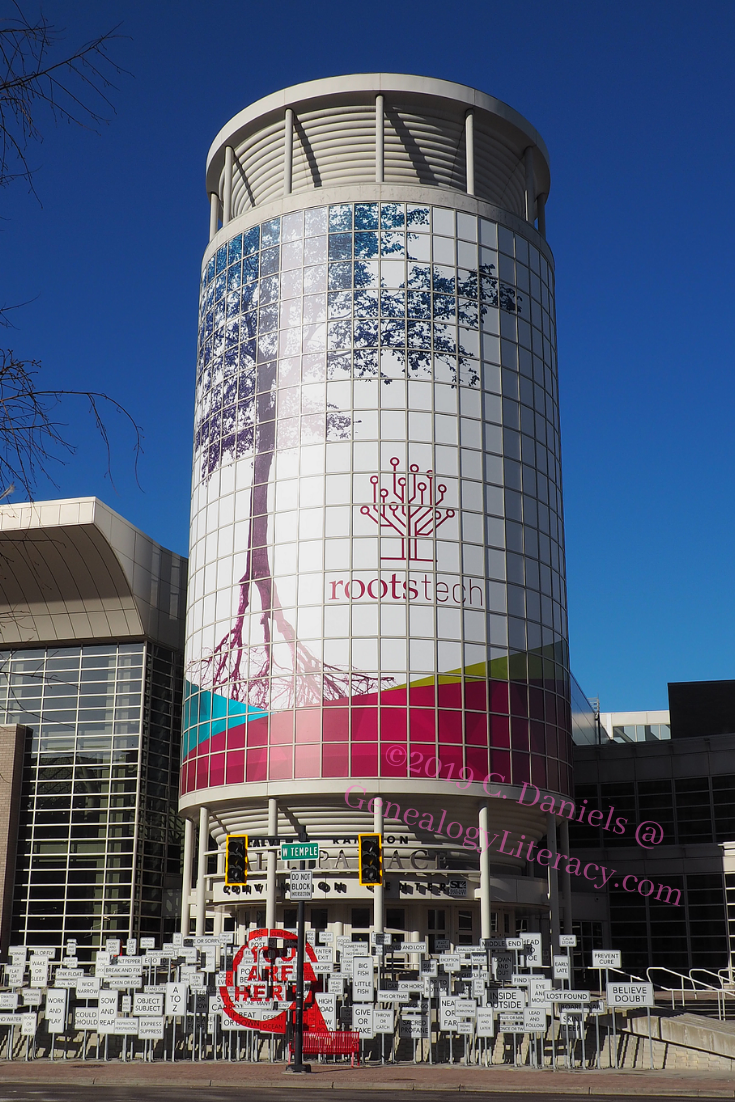 Psssst….RootsTech is back, Y’all…in a BIG way – so spread the word! Not that it was ever really gone – but the bad reports from last year had me worried. Despite my inclination to be a wordy blogger – I must admit I am almost speechless where RootsTech 2019 is concerned. This year’s conference surpassed my grandest expectations – and I can safely declare that this was (by far) the best one I’ve experienced yet.
Psssst….RootsTech is back, Y’all…in a BIG way – so spread the word! Not that it was ever really gone – but the bad reports from last year had me worried. Despite my inclination to be a wordy blogger – I must admit I am almost speechless where RootsTech 2019 is concerned. This year’s conference surpassed my grandest expectations – and I can safely declare that this was (by far) the best one I’ve experienced yet.
To be clear, there was never a point when I could not get into a class, nor felt overwhelmed by crowds, nor had to stand in line for anything – except at the concession stand for lunch one day – which is to be expected, and even that was only about 10 minutes. The attendance totals have been in for about a week, and the general conference numbers hit over the 15,000 mark (with over 23K for Family Day) – signaling a rousing success, as usual.
For those of you who did not get to attend this year, here are a few changes that I think made a significant impact:
-
- Conference badges by mail: This meant many of us walked into the Salt Palace ready to hit sessions, instead of standing in line to pick up packets. Lanyards, badge cases, and conference bags were in multiple places throughout the Palace, making pick-up a breeze.
 Spreading out – By placing check-in over on the far side of the Salt Palace, along with a few of the sessions, there was more breathing room. Heading over in that area brought back memories from the early years when RootsTech was only on the north side of the Palace. Look how far it has grown!
Spreading out – By placing check-in over on the far side of the Salt Palace, along with a few of the sessions, there was more breathing room. Heading over in that area brought back memories from the early years when RootsTech was only on the north side of the Palace. Look how far it has grown!- No badge scanning, except for lunches and labs. No session lines, and no one chased you out if your next session was in the same room.
- Opening sessions at 11am – Some folks grumbled about this, but not me – I loved this change! This allowed folks to wonder over there to find a seat in their own good time – instead of everyone running over to find a seat first thing in the morning. I am not a morning person, and getting to the 8am sessions is hard enough – but with a half hour to get over there after the earlier morning sessions, I didn’t feel rushed. Besides, once the lights go dark and you’re enjoying the festivities, you have no idea what time it is. Plus, after the program is over, folks are in a festive mood, and enjoy talking with each other – they can go to lunch, hit the exhibit hall, engage with fellow attendees, or plan for the afternoon sessions – instead of rushing off to the next session. This change also means the livestream opening sessions were hitting the central/eastern time zones around lunch time – making contiguous enjoyment (and social media engagement) more possible.
- Easy to identify, helpful staff – perfect number ratio of helpers to attendees. If I needed help, they were always just a few steps away – and very attentive.
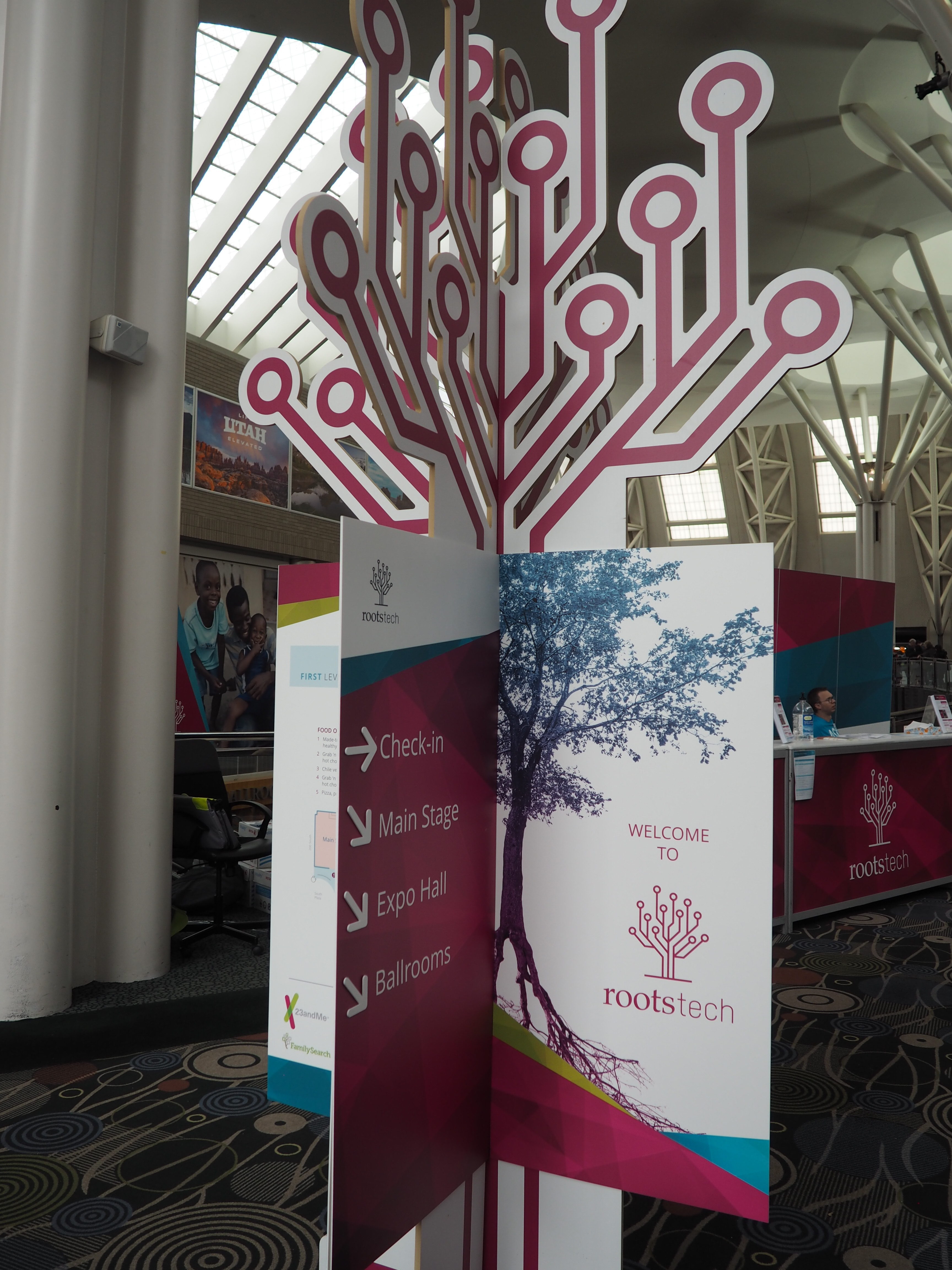 Great signage! Vertical and horizontal signage everywhere – even under your feet!
Great signage! Vertical and horizontal signage everywhere – even under your feet!
Highlights:
One of RootsTech’s greatest strengths has been the electric atmosphere of inspiration that builds each year and leaves you with the impression that you serve a great purpose – and that with the right knowledge, skills, and tools, you can achieve your genealogy goals. Obviously, the inspirational opening sessions always provide highlights, and become some of the best memories of the conference. And the sessions are amazing! But here are a few others:
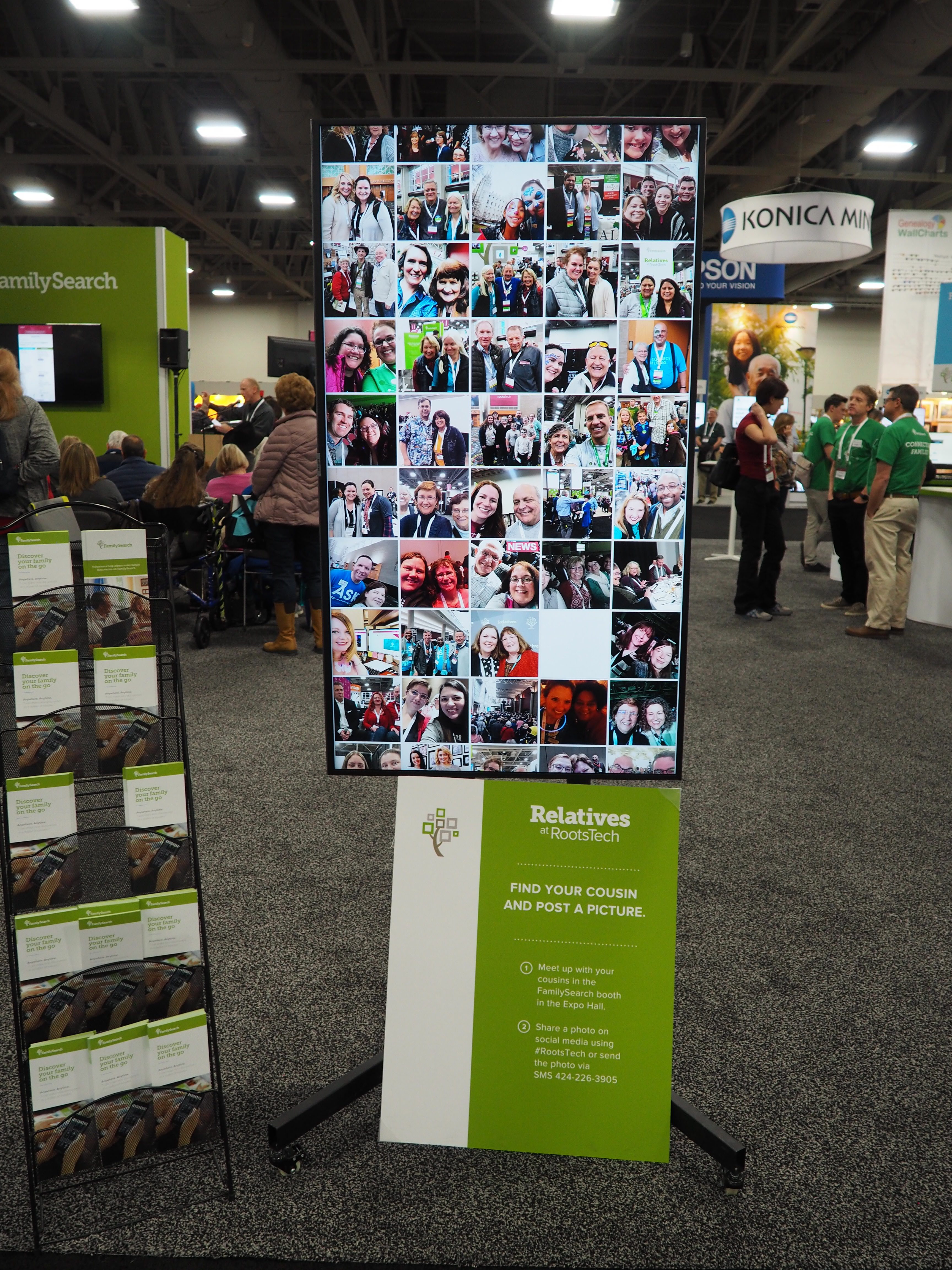 The Find Relatives at RootsTech Game – If you had ever entered even a small amount of generational information in the Family Search Family Tree, you were connected to the cousin three ring circus. But what a hoot it was! As the conference grew, there were over 9,000 people participating, and I matched as a cousin to over 2,500 of them – including David Rencher and Crista Cowan! One of the funniest moments was when I connected to a local Kentucky genealogist whom I’ve known for years, and live within 10 miles of, and who comes to RootsTech every year – Here we are – our cousin selfie! :
The Find Relatives at RootsTech Game – If you had ever entered even a small amount of generational information in the Family Search Family Tree, you were connected to the cousin three ring circus. But what a hoot it was! As the conference grew, there were over 9,000 people participating, and I matched as a cousin to over 2,500 of them – including David Rencher and Crista Cowan! One of the funniest moments was when I connected to a local Kentucky genealogist whom I’ve known for years, and live within 10 miles of, and who comes to RootsTech every year – Here we are – our cousin selfie! :
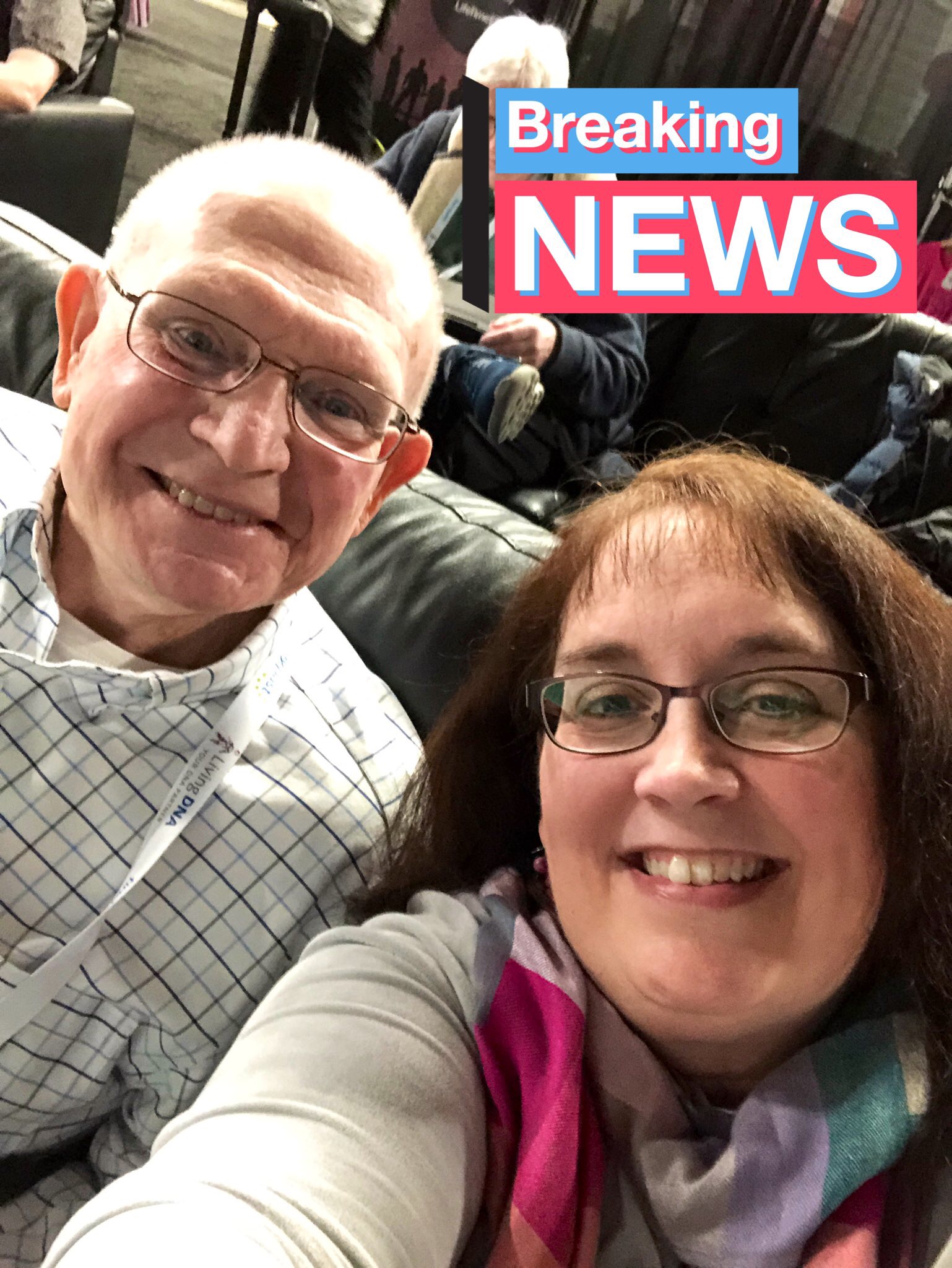
The SLVGS Board trying to wrangle new members at the Unconferencing Table – It was so much fun to work with these dedicated folks whom I’ve only met previously as virtual avatars. We connected with several potential new members at the Unconferencing area.:

Giving My Presentation on Consumable Genealogy – Such a great engaged crowd – they seemed to really have fun with the examples of packaging genealogy bites into consumable portions for print or social media. My largest crowd ever, at about 400 – and the tech staff/room monitors were wonderful. This was my second time speaking at RootsTech, and it was a fantastic experience, as usual!:

The Discovery Zone Heritage Toys (Also in the library) – These toys were also active if you participate in the Family Search Family Tree – I felt like a kid again with all of these cool discovery tools. Sometimes, it’s very revealing to step back and look at your family data to see the worldwide connections. My only gripe, was that I spent a couple of hours playing in the library Discovery Center with the same toys, and my fun elements produced that day were never emailed to me – huge bummer! I was only sent the location images.:

The DNA Learning Center – Introductory DNA sessions to help with this topic: Always crowded, with loads of mini-sessions, various speakers, with helpful videos and knowledgeable staff.

The RootsTech Store: I LOVE swag! And even when it’s not free swag – I am very willing to purchase more! It was a nice open store, easy to shop with so many cool options! My suggestion for next year – Please produce a sweatshirt or hoodie! It’s cold in SLC in late February! I would have snapped that up! Hey, RootsTech officials – you might want to create an online store of RootsTech swag – I’d seriously send my family members there to fill up my Christmas wish list!
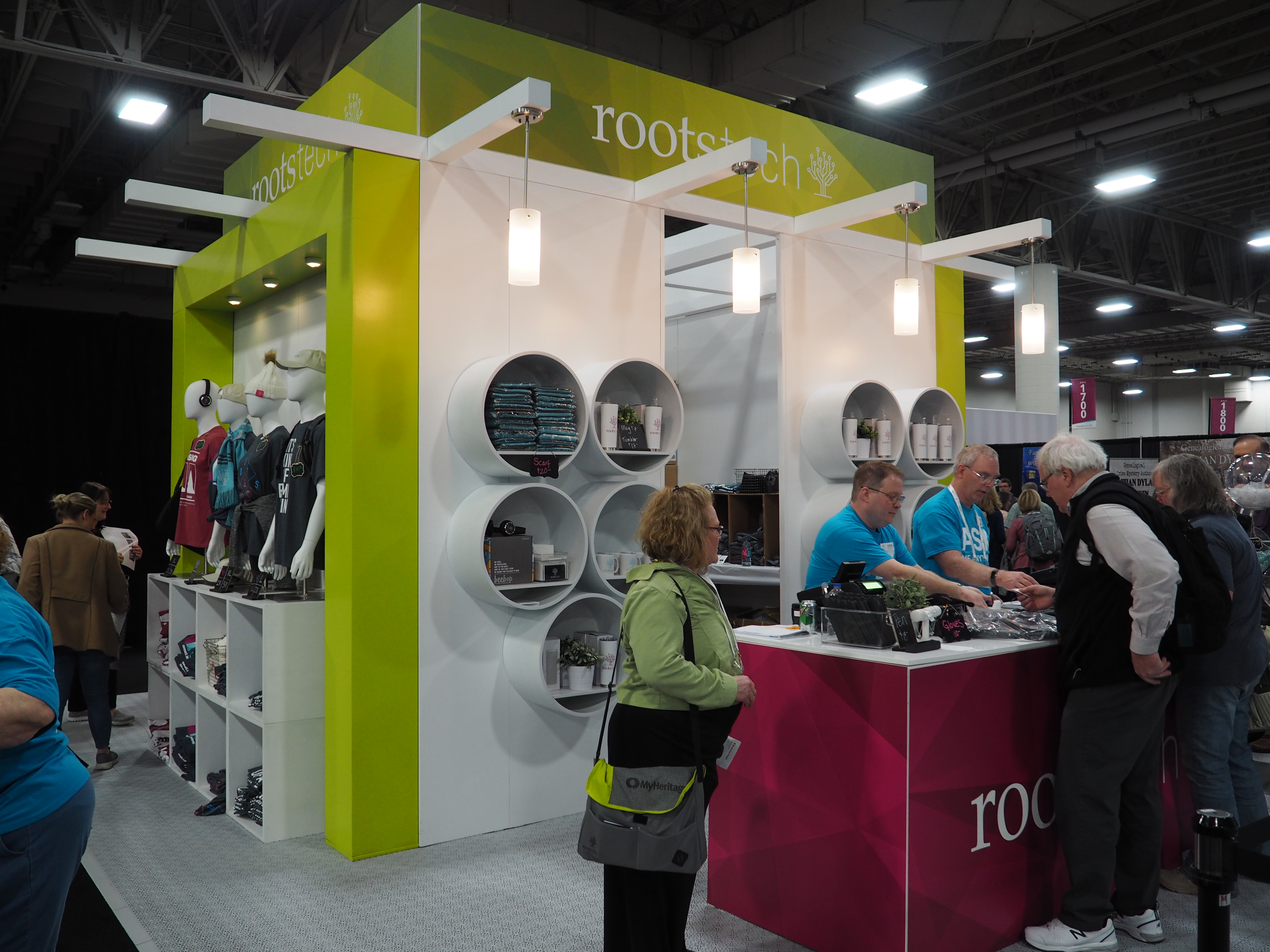
The Demo Theater: Smaller than previous years, and hidden towards the back – but always crowded. I always learn a lot in this space while I’m taking a breather in a very comfortable environment. They also have door prizes, BTW.

The Ancestry Photo Booth – and their wonderful cookies!: Confession: At first, I kinda rolled my eyes at this – but then thought, hey, I’m kinda dressed up and I had a new find to share, so I gave it a try. The result, in this glamorous backdrop, was pretty awesome! They not only sent me the digital image they took with their beautiful professional camera, but also a lovely print to take with me – topped off with an amazingly tasty cookie! Well played, Ancestry! Well played!

Meeting up with genie friends, as usual: I always love meeting old and new friends!

Added Bonus: Researching in the library!: We flew in a few days early to research for hours and hours – and I regret nothing!! Always a fantastic time – and so much brought back to add to my tree. Some serious brick walls damaged in that library! I’m still processing all that I brought home.

Hiccups – I didn’t encounter too many hiccups this year – and have declared this to be the best RootsTech yet – but if pressed, Id have to identify the following as my least favorite elements:
Unconferencing Sessions: I had not been to RootsTech in a few years, and my memory of the Unconferencing area was drastically different than I encountered this year. Gone were the small curtained off areas where you could talk to a group or even present something on the provided board, or diagram ideas. This concept has now been relegated to 8 tables 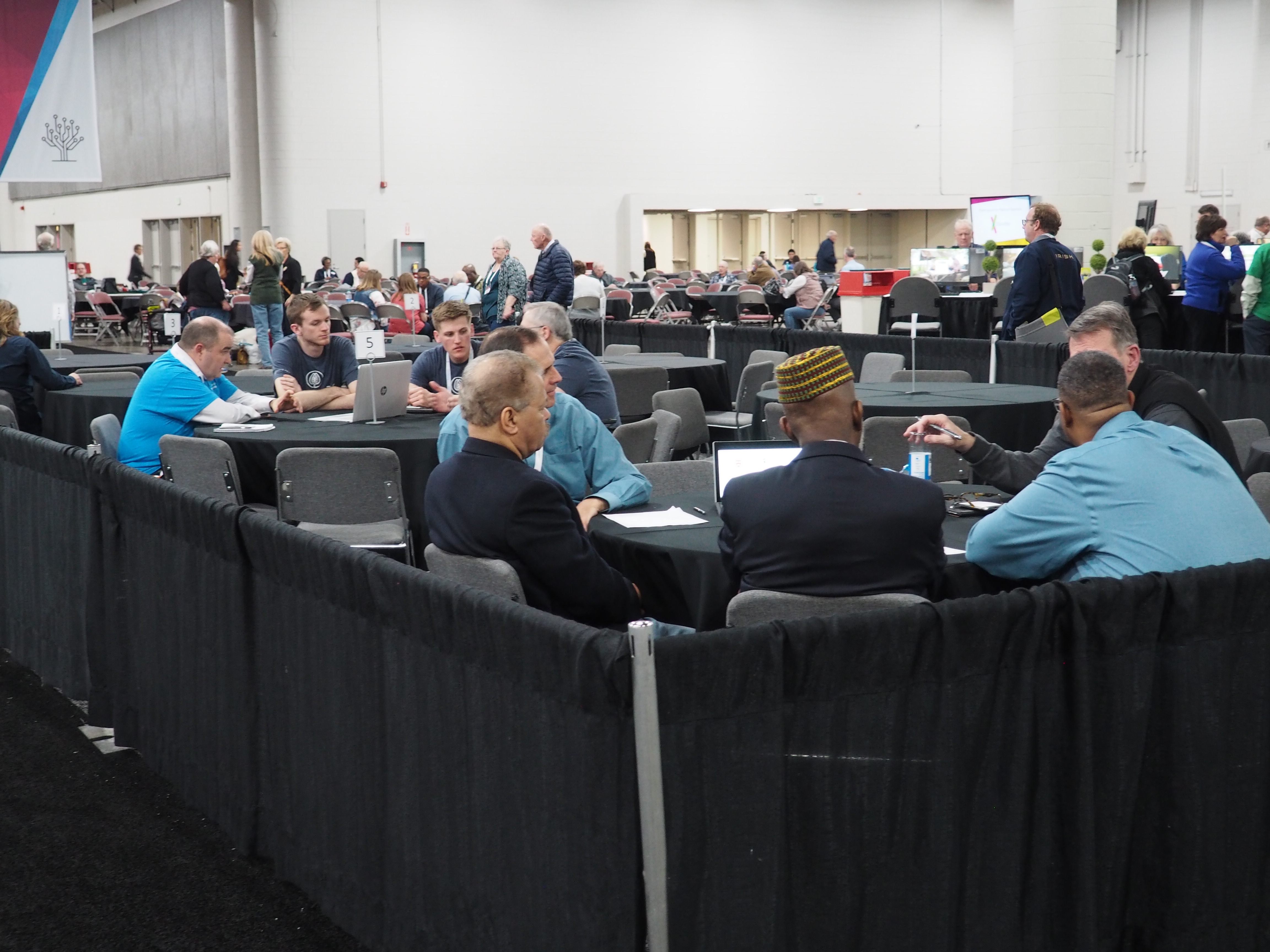 crammed into the space of about two booth footprints. Really didn’t like this shrinkage, and while I did see groups using it – it was also placed in the very back of the exhibit hall instead of in the front where it used to be. Most people I talked to never found its location, and with very little signage – I would say this looks like the last year for the Unconferencing area – as I’m pretty sure we were witnessing the death knell. Some of the presenters mentioned their disappointment with the size and location in our Facebook group – but also complained about the name – saying it was unfriendly, and not appealing. Perhaps it could be resurrected as something slightly different? Break-out sessions perhaps? Obviously, the large exhibitors enjoy great success with their own areas of demos and discussions – so the concept is not a bad one. But it would be nice to have a more tailored area for folks to discuss genealogy issues – or meet up with speakers after their sessions, or programmers to discuss concepts with users (as was its initial purpose.) Conversely, I also understand usage and statistics – if people weren’t using them in the previous years, I can understand the reduction.
crammed into the space of about two booth footprints. Really didn’t like this shrinkage, and while I did see groups using it – it was also placed in the very back of the exhibit hall instead of in the front where it used to be. Most people I talked to never found its location, and with very little signage – I would say this looks like the last year for the Unconferencing area – as I’m pretty sure we were witnessing the death knell. Some of the presenters mentioned their disappointment with the size and location in our Facebook group – but also complained about the name – saying it was unfriendly, and not appealing. Perhaps it could be resurrected as something slightly different? Break-out sessions perhaps? Obviously, the large exhibitors enjoy great success with their own areas of demos and discussions – so the concept is not a bad one. But it would be nice to have a more tailored area for folks to discuss genealogy issues – or meet up with speakers after their sessions, or programmers to discuss concepts with users (as was its initial purpose.) Conversely, I also understand usage and statistics – if people weren’t using them in the previous years, I can understand the reduction.
Access and Preservation Track on Wednesday: While this was a nice set of small, targeted sessions, I think many people misunderstood its purpose. As a librarian with special collections/archival training, I was going to attend this, no matter the purpose – but after squeezing in to the last couple of seats at 8am, and then watching the attendance bleed out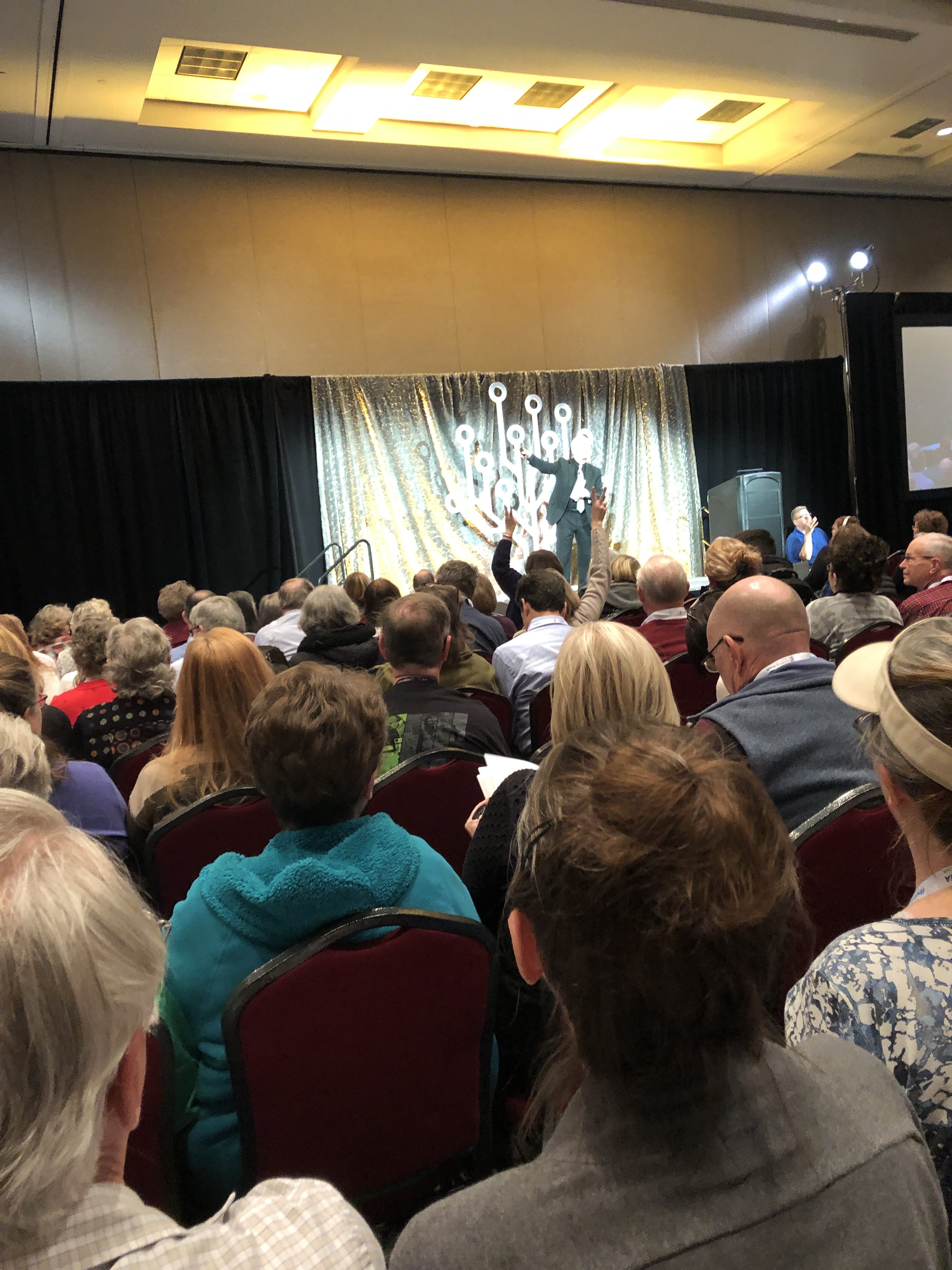 like a trauma victim – until there was only about a third of them left – was a red flag that most people didn’t understand the intended focus. As a whole – I would say this was RootsTech’s version of “Librarians Day” – or “Digital Archivist’s Day” – etc. Which makes all of this more intriguing. With the huge crowd coming in to learn about “Access and Preservation” – regular folks who were not information professionals – doesn’t that indicate that the general genealogy crowd is very interested in preservation and access – for their own collections? Perhaps? Or were they wanting to learn more about the efforts being made to place more unique material online? Or did they want to learn more about digitization best practices? This is an area RootsTech should investigate. It sure caught my attention when thinking about this after the event.
like a trauma victim – until there was only about a third of them left – was a red flag that most people didn’t understand the intended focus. As a whole – I would say this was RootsTech’s version of “Librarians Day” – or “Digital Archivist’s Day” – etc. Which makes all of this more intriguing. With the huge crowd coming in to learn about “Access and Preservation” – regular folks who were not information professionals – doesn’t that indicate that the general genealogy crowd is very interested in preservation and access – for their own collections? Perhaps? Or were they wanting to learn more about the efforts being made to place more unique material online? Or did they want to learn more about digitization best practices? This is an area RootsTech should investigate. It sure caught my attention when thinking about this after the event.
Demo Stage: Thank heavens it hasn’t changed too much – but again, it’s been shrunk, and placed in the back, instead of being a focal point of festivity for the Exhibit Hall. Gone is the soda fountain bar and popcorn – and gone is the concept of walking around and hearing some of what was being demoed. I’m guessing that was the problem. As the Exhibitors have adopted their own demo areas and engagement clusters with microphone and large screens, their sound would be in competition with the Demo Stage instructors, and that would not be pleasant for the big sponsors. At least the comfy chairs and couches were still there – along with some really nice door prizes for those who sat through the individual demos.
Daily Sheets: They announced that there would be daily handouts with the general session info, as well as a list of the most popular classes that day. Ummm, first of all, I never found any of these sheets, until I stumbled upon a small pile on the very last day for Family Day. To be fair, I didn’t look super hard for them during the regular conference days. However, I’m not sure about plucking out a handful of sessions to highlight as “popular”. That could go one of two ways – either it drives a ton of people to these sessions, resulting in overcrowding, or it drives people away since they want to avoid the large crowds if possible. Plus, as a speaker, the speaker liaisons, kept trying to avoid giving us room capacity and info on popular sessions because they said they didn’t want to make other speakers feel less worthy by identifying popular sessions based on topic, speaker and/or room size. But then each day, they were highlighting popular sessions to hand out to everyone. Since we all have the app and the conference booklet outlining the offerings of each day – I don’t think they need these daily sheets – and I’m sure they could save a little money in printing.
Next Steps:
RootsTech is not really over – you have several options to take in more of this conference over the next several months: Watch the canned livestream videos; Download the Syllabus Material; Explore the Exhibitor List – and prepare to watch more when the international version of RootsTech premiers in London in October!
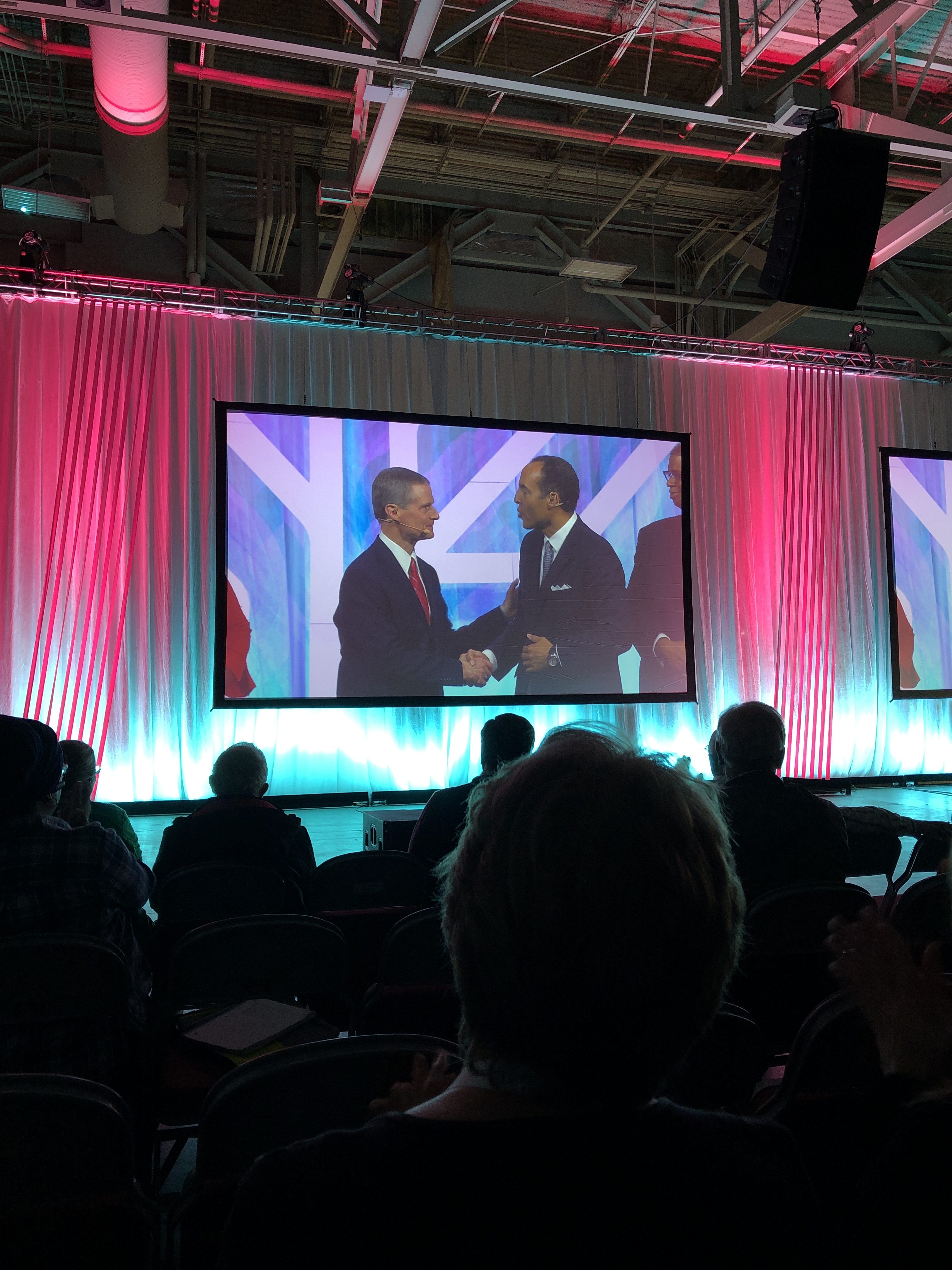
This type of experience is unparalleled, and should be experienced in person at least once. Obviously, for continued inspiration and exposure to the most current genealogy tech tools, it is encouraged to attend as frequently as possible. However, as a tech conference, RootsTech has ensured that there are multiple remote methods for attending virtually. Not only can you sit at home and watch several of the videos for free, but this year they also offered a virtual pass that allowed you to enjoy 18 sessions from the comfort of your own home. Coupled with the exhibit hall list for traversing via websites at your leisure, and syllabus material you can download, #notatrootstech folks have a buffet of learning opportunities available.
BTW, Next year is RootsTech’s 10th anniversary! Theme: The Story of You! Make plans to attend – I’m sure this will be a grand and unforgettable party!
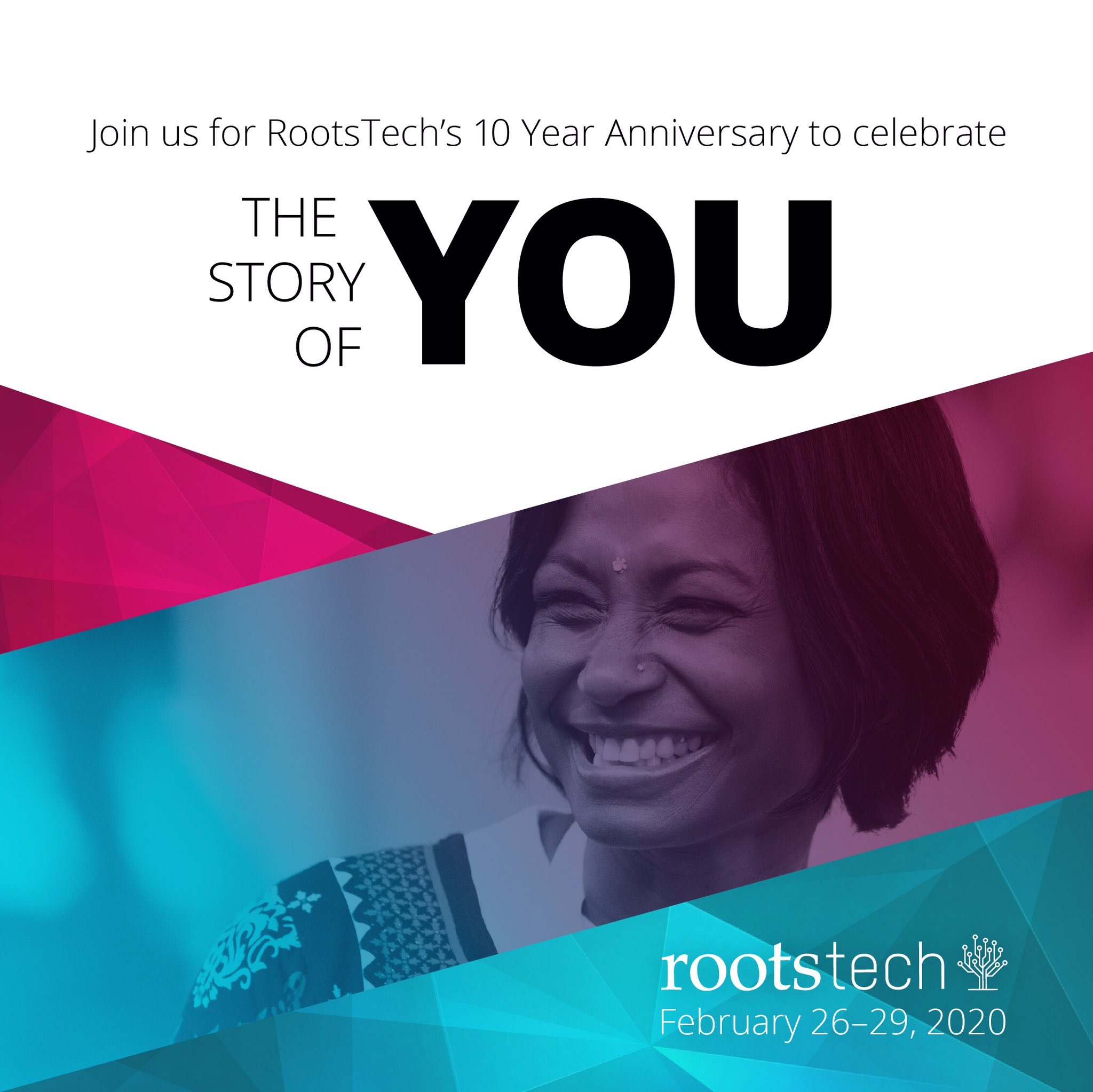
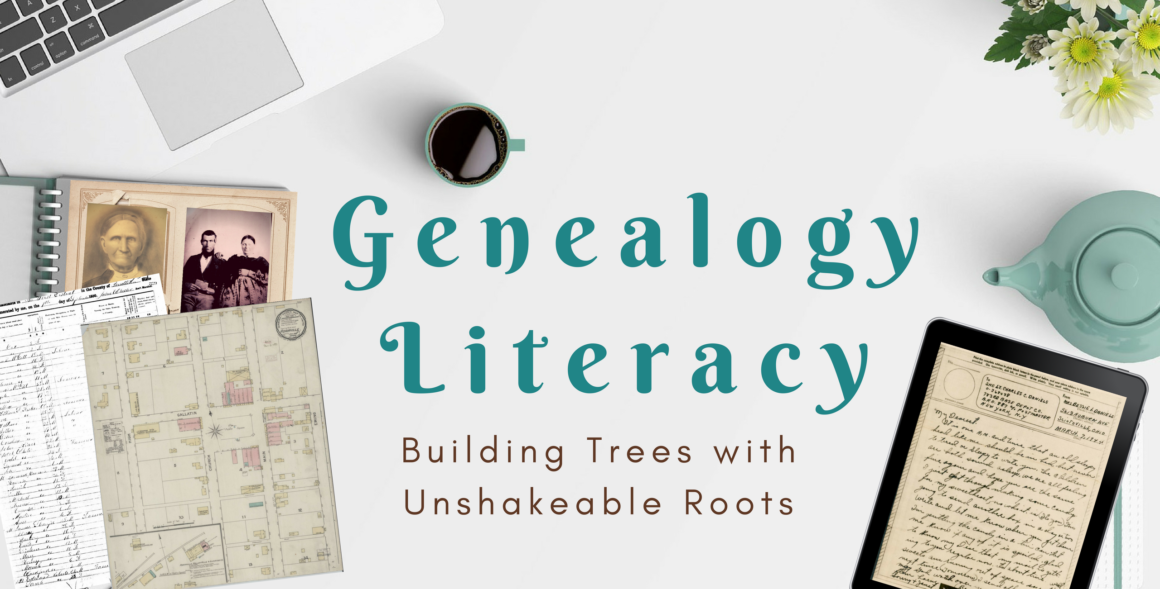
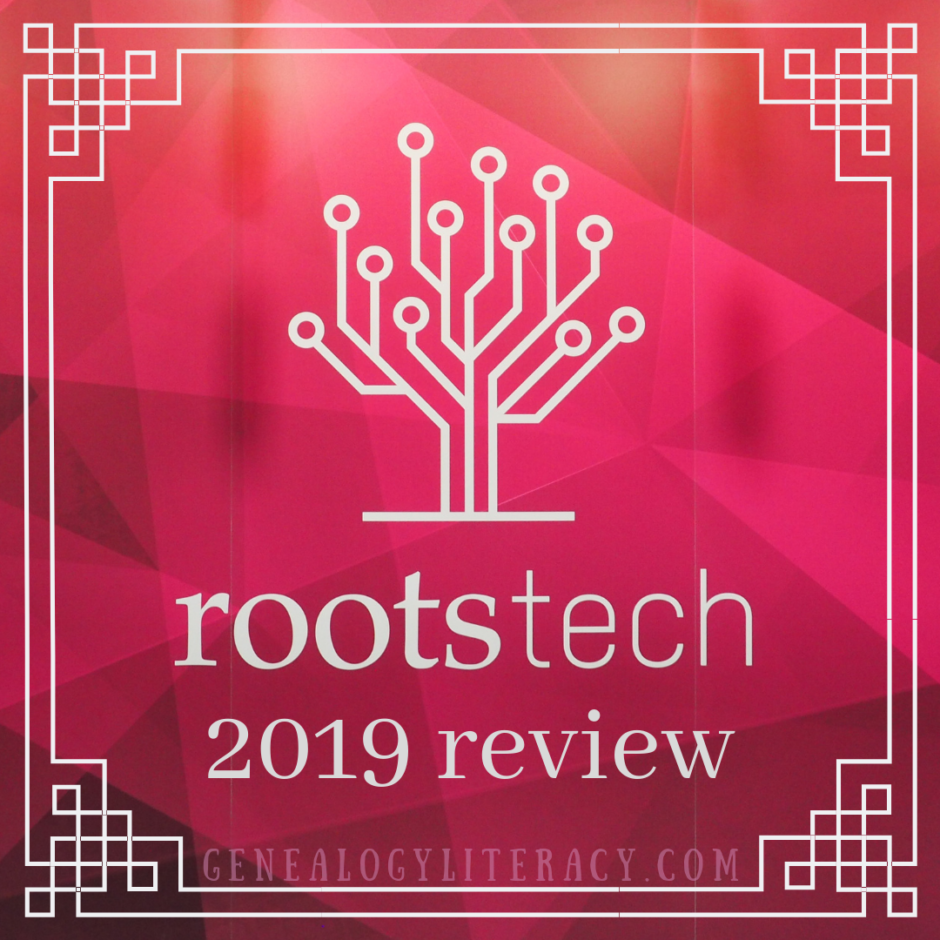
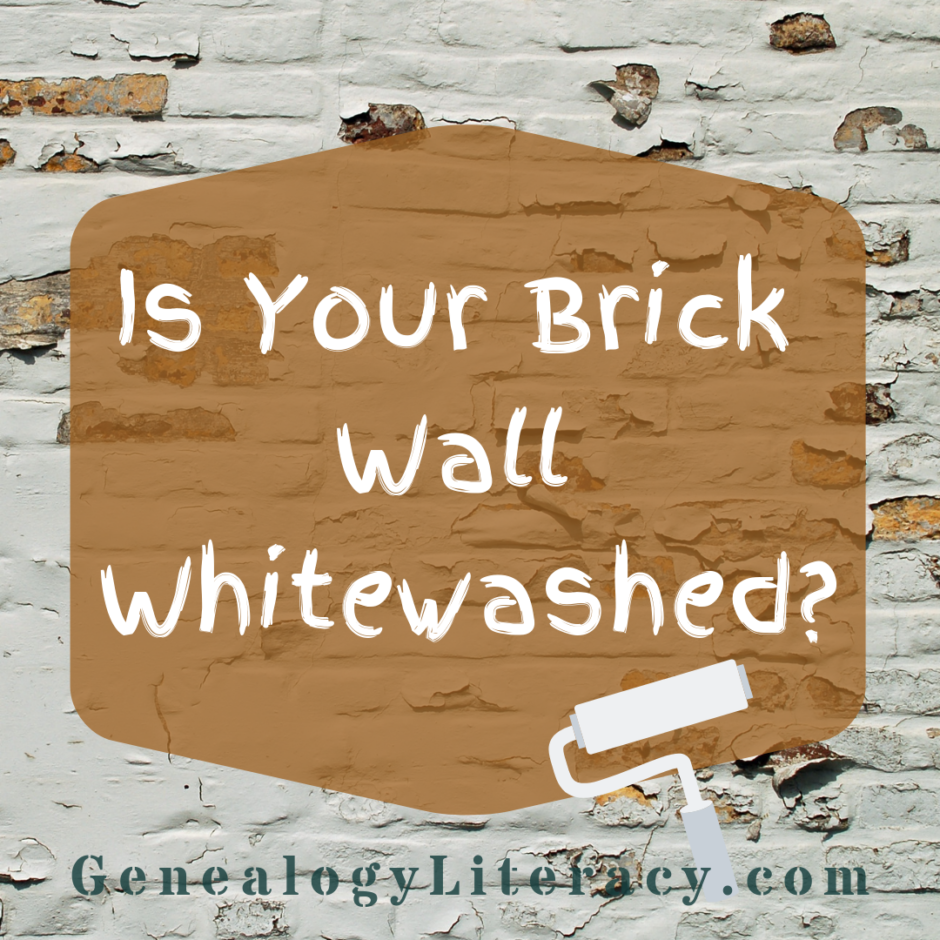
 firmly in my path until I was able to strip away the whitewashing put in place to divert descendants from the truth.
firmly in my path until I was able to strip away the whitewashing put in place to divert descendants from the truth. So, we’ve all been taught about the FAN Club research method – Friends, Acquaintances, & Neighbors (or Family, Acquaintances, & Neighbors) – but can I get a show of hands how many of us actively search African American records for our white family surnames? When encountering that title on the shelf about AA cemeteries or marriages – if we don’t think our family is inside, do we just breeze on by? Years ago, I would have said, “yeah, guilty as charged.” But in the past decade or so, the desire to help bring families together through research has shifted my information gathering strategies, and I find myself in AA records on purpose to help connect people and better understand communities.
So, we’ve all been taught about the FAN Club research method – Friends, Acquaintances, & Neighbors (or Family, Acquaintances, & Neighbors) – but can I get a show of hands how many of us actively search African American records for our white family surnames? When encountering that title on the shelf about AA cemeteries or marriages – if we don’t think our family is inside, do we just breeze on by? Years ago, I would have said, “yeah, guilty as charged.” But in the past decade or so, the desire to help bring families together through research has shifted my information gathering strategies, and I find myself in AA records on purpose to help connect people and better understand communities. My brick wall began in neighboring Pendleton County. My 4th Great Grandfather, Samuel Cox, had married 3 women over his lifetime – the first two named Mary and the last named Barbary. With his estate division, Barbary was easy to identify, and even fill in her backstory as the former widow of a neighbor, Ross McCall. The other two Marys were much harder to distinguish. Over the previous generations, some family members had mixed up the women’s surnames. A divorce case for Mary #2 was able to identify her potential surnames (yes, she had more than a couple in the depositions), leaving the first Mary (my ancestor) with the pre-marriage surname of Dean. As my 4th Great Grandparents were not married in this area, we only knew her surname from the
My brick wall began in neighboring Pendleton County. My 4th Great Grandfather, Samuel Cox, had married 3 women over his lifetime – the first two named Mary and the last named Barbary. With his estate division, Barbary was easy to identify, and even fill in her backstory as the former widow of a neighbor, Ross McCall. The other two Marys were much harder to distinguish. Over the previous generations, some family members had mixed up the women’s surnames. A divorce case for Mary #2 was able to identify her potential surnames (yes, she had more than a couple in the depositions), leaving the first Mary (my ancestor) with the pre-marriage surname of Dean. As my 4th Great Grandparents were not married in this area, we only knew her surname from the 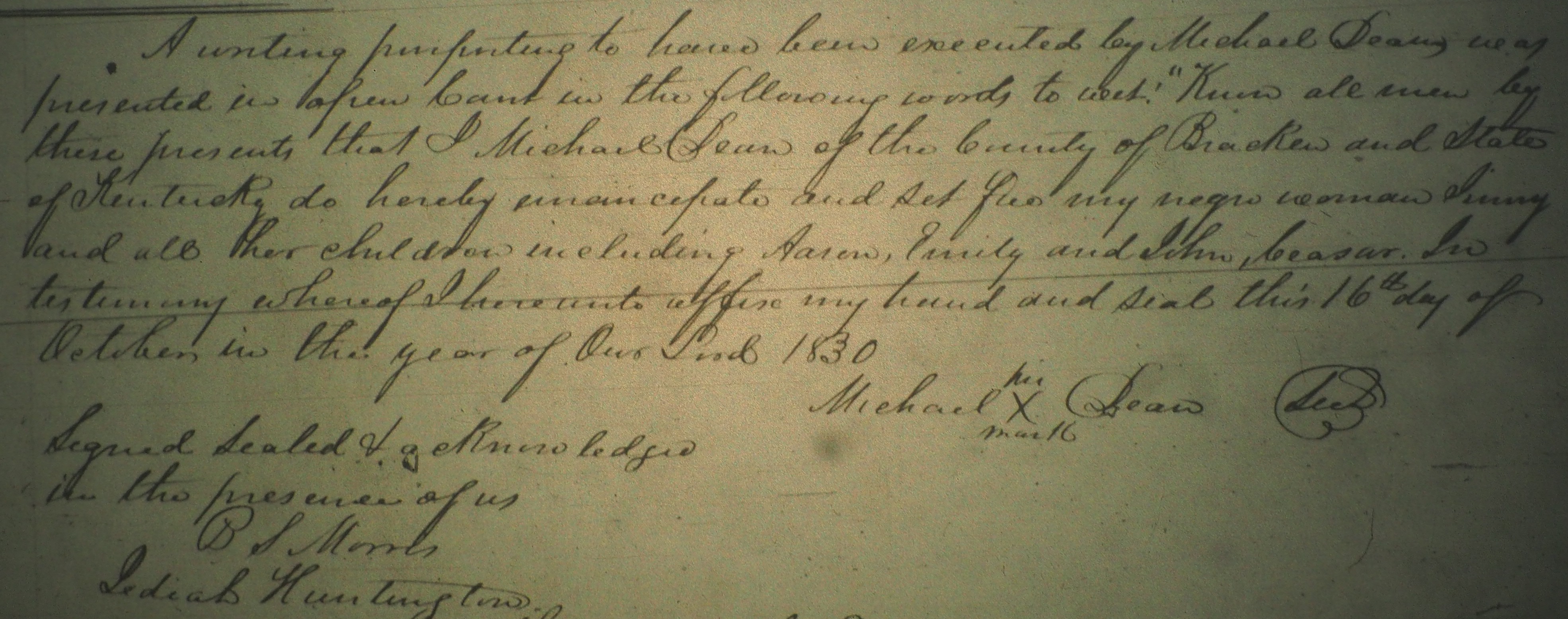
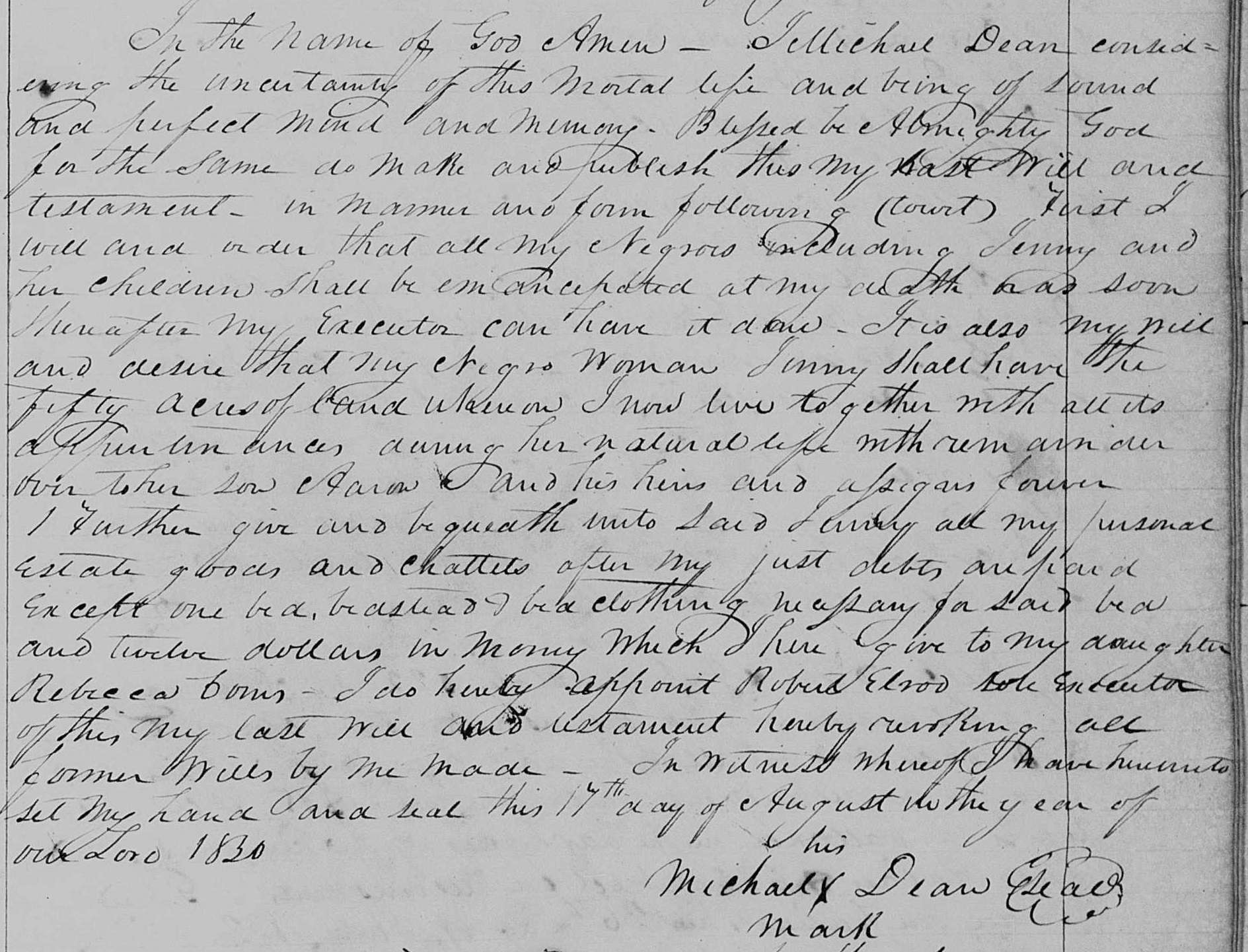
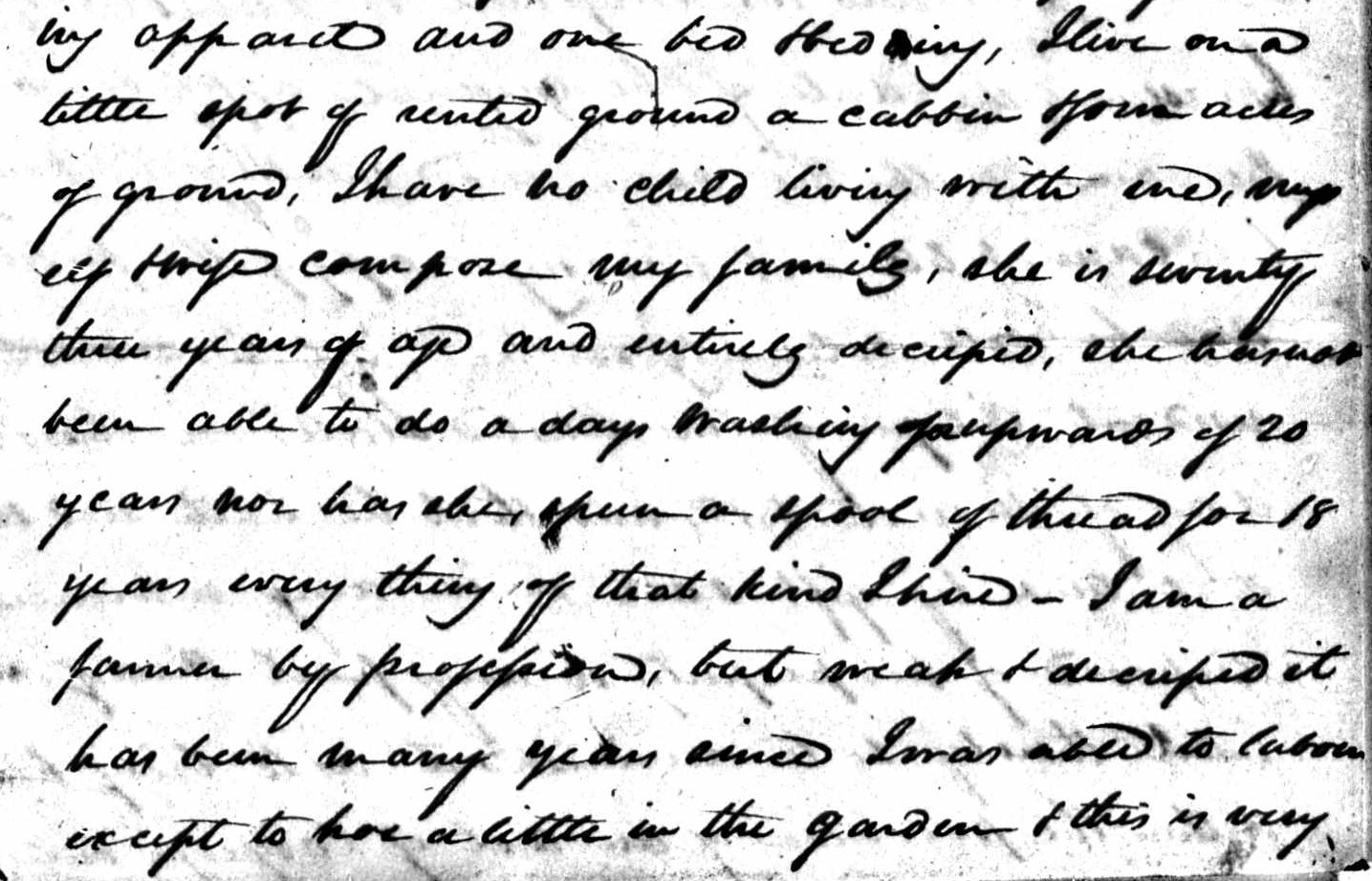

 Jenny’s children. Meaning that Aaron, Emily, and John Caesar would have been siblings or nieces/nephews to my Samuel and Mary. Did they care? Were they embarrassed by this? It was a very public action to free them, and Michael had done just that.
Jenny’s children. Meaning that Aaron, Emily, and John Caesar would have been siblings or nieces/nephews to my Samuel and Mary. Did they care? Were they embarrassed by this? It was a very public action to free them, and Michael had done just that.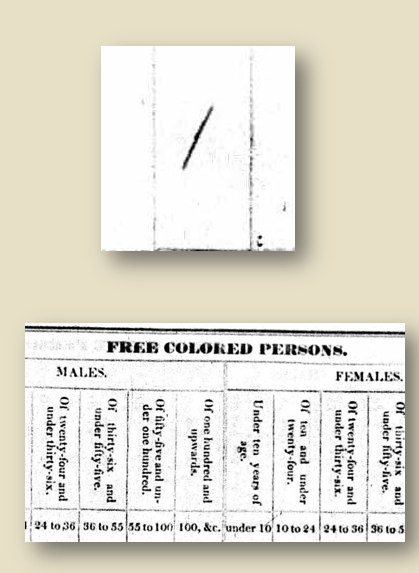 In the 1830 census – taken the same year that the emancipation was filed in Bracken County Court, my 4th great grandparents, Samuel and Mary, in neighboring Pendleton County, have a young man living in their household that is in the column: Free Colored Persons – Males, 10-24 in age. That little hashmark in this column gave me goosebumps. Is this the missing Aaron? I certainly hope so. If this is Aaron, there is a good likelihood that my grandparents were supportive of this emancipation action. If my speculation is correct, and Aaron is the son of Michael or Abel, then Mary had welcomed her newly freed brother or nephew into their home – and I’m guessing to offer protection. But why did no one ever tell us about this relationship?
In the 1830 census – taken the same year that the emancipation was filed in Bracken County Court, my 4th great grandparents, Samuel and Mary, in neighboring Pendleton County, have a young man living in their household that is in the column: Free Colored Persons – Males, 10-24 in age. That little hashmark in this column gave me goosebumps. Is this the missing Aaron? I certainly hope so. If this is Aaron, there is a good likelihood that my grandparents were supportive of this emancipation action. If my speculation is correct, and Aaron is the son of Michael or Abel, then Mary had welcomed her newly freed brother or nephew into their home – and I’m guessing to offer protection. But why did no one ever tell us about this relationship?

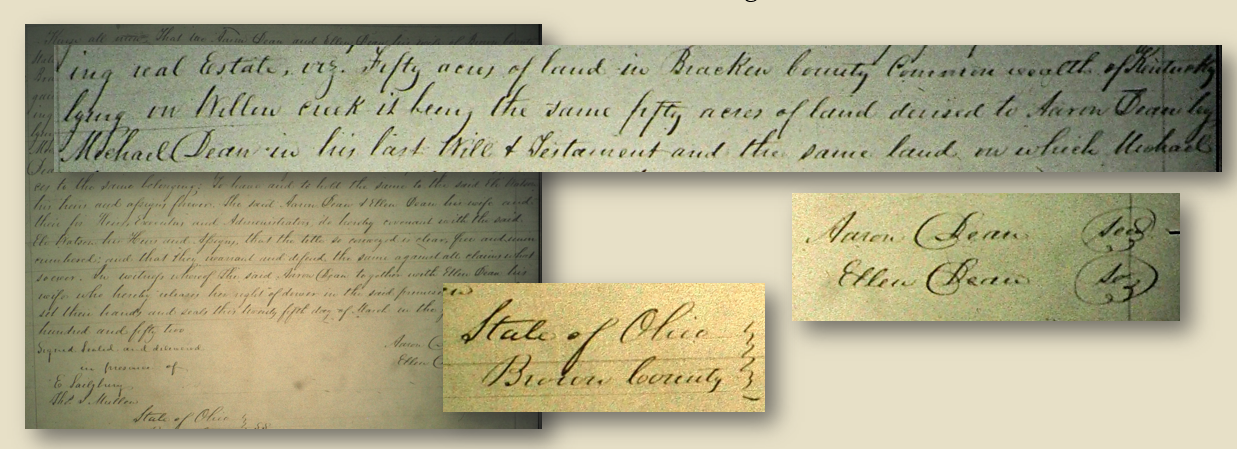
 So – despite the forest of unsourced trees on Ancestry – I will occasionally search for a branch in the hopes of stumbling across a tree with valid sources attached to follow in my own research. While searching for more information about Michael, I stumbled upon a tree that included Michael and his (what I believe to be) erroneous Scottish birth. I went down the line back towards Mary, his daughter and my 4th great grandmother, when I hit at something unexpected. Whomever created this tree went to Abel and then to a black family in Ohio with the surname of “Freeman”! One of the ancestors, Joseph Riley Freeman, in his marriage record lists his own surname as “Freeman” and his father’s name as A. Dean and his mother as Eliza Robinson. The creator of the Ancestry tree believed that “A. Dean” was Abel T. Dean of Bracken/Pendleton Counties and attached his family as thus. But what I think just happened – is that the family had an inherited narrative stating that they were descended from Abel Dean, but when a record came along listing A. Dean as the father, they jumped to Abel, missing Aaron entirely. I think the generation just got disconnected and lost. Michael’s son, Abel, was only ever married to Nancy Seay, never an Eliza Robinson. But Eliza sure sounds similar to Ellen, who was listed on the deed transfer of 1852.
So – despite the forest of unsourced trees on Ancestry – I will occasionally search for a branch in the hopes of stumbling across a tree with valid sources attached to follow in my own research. While searching for more information about Michael, I stumbled upon a tree that included Michael and his (what I believe to be) erroneous Scottish birth. I went down the line back towards Mary, his daughter and my 4th great grandmother, when I hit at something unexpected. Whomever created this tree went to Abel and then to a black family in Ohio with the surname of “Freeman”! One of the ancestors, Joseph Riley Freeman, in his marriage record lists his own surname as “Freeman” and his father’s name as A. Dean and his mother as Eliza Robinson. The creator of the Ancestry tree believed that “A. Dean” was Abel T. Dean of Bracken/Pendleton Counties and attached his family as thus. But what I think just happened – is that the family had an inherited narrative stating that they were descended from Abel Dean, but when a record came along listing A. Dean as the father, they jumped to Abel, missing Aaron entirely. I think the generation just got disconnected and lost. Michael’s son, Abel, was only ever married to Nancy Seay, never an Eliza Robinson. But Eliza sure sounds similar to Ellen, who was listed on the deed transfer of 1852. Obviously, I have a lot more work to do in order to confirm my surname change suspicions – and the rest of the story will depend on my findings. But the journey so far has been remarkable, and I can’t wait for the next chapter! My goal: Hugging my newly found cousins – if I can find them – and IF they want a hug (respecting their wishes, of course.)
Obviously, I have a lot more work to do in order to confirm my surname change suspicions – and the rest of the story will depend on my findings. But the journey so far has been remarkable, and I can’t wait for the next chapter! My goal: Hugging my newly found cousins – if I can find them – and IF they want a hug (respecting their wishes, of course.)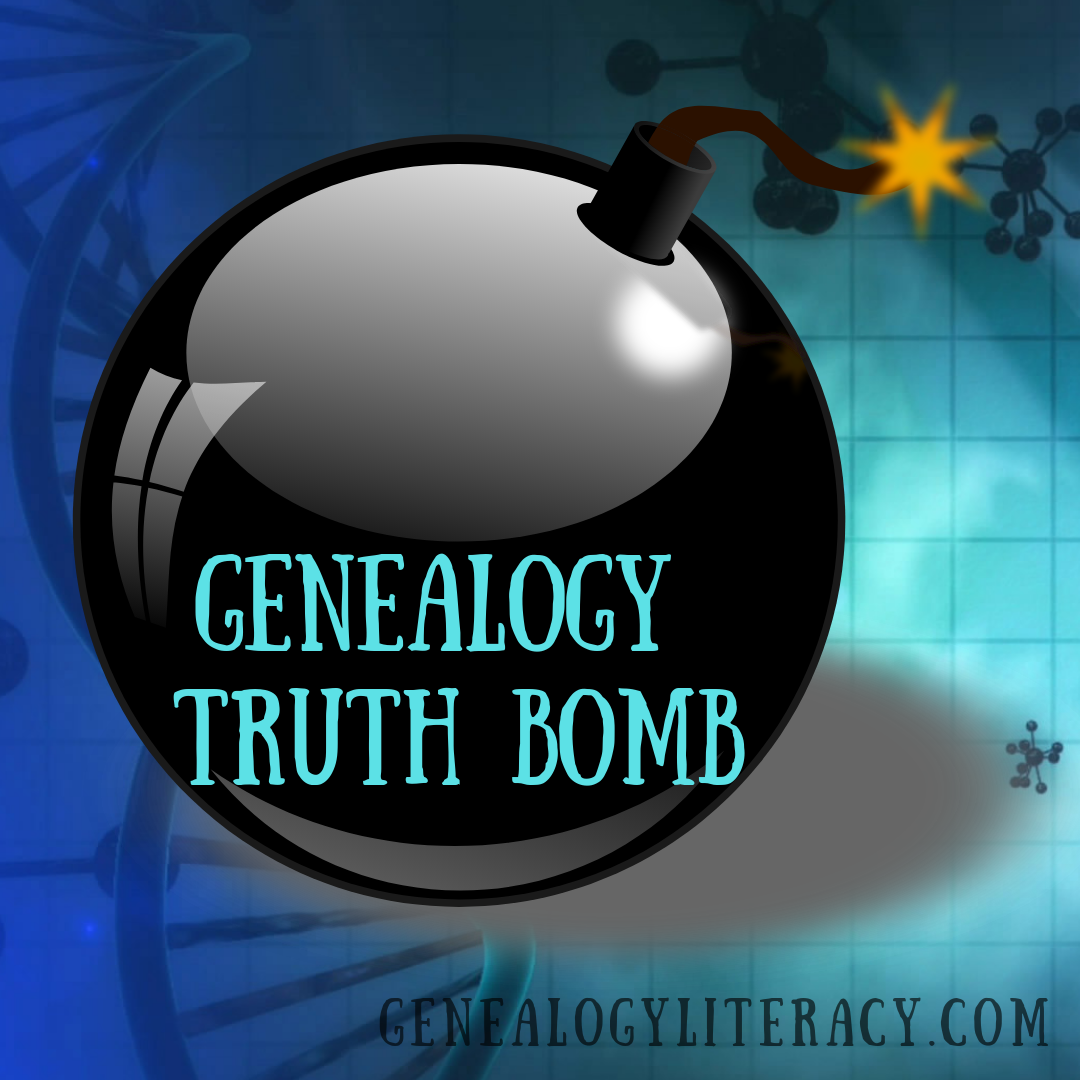 We have got to practice a more robust and inclusive FAN Club approach! Because I’m going to be really frank here – How dare we ever consider our research to be thorough if we profess to practice the FAN approach and ignore a significant portion of our family’s community and familial network simply because of race?! If we alter our research approach to practice a fully inclusive strategy, there is a high likelihood that we will demolish a multitude of mutual brick walls, as well as unite long separated families and begin the process of telling a more accurate history of our communities and our country.
We have got to practice a more robust and inclusive FAN Club approach! Because I’m going to be really frank here – How dare we ever consider our research to be thorough if we profess to practice the FAN approach and ignore a significant portion of our family’s community and familial network simply because of race?! If we alter our research approach to practice a fully inclusive strategy, there is a high likelihood that we will demolish a multitude of mutual brick walls, as well as unite long separated families and begin the process of telling a more accurate history of our communities and our country.
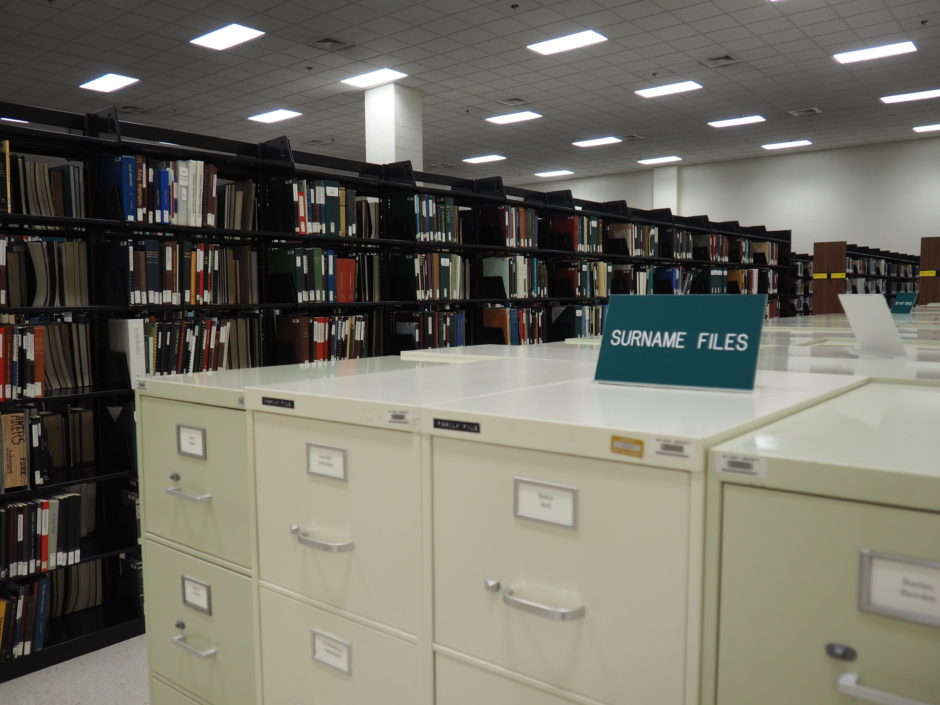
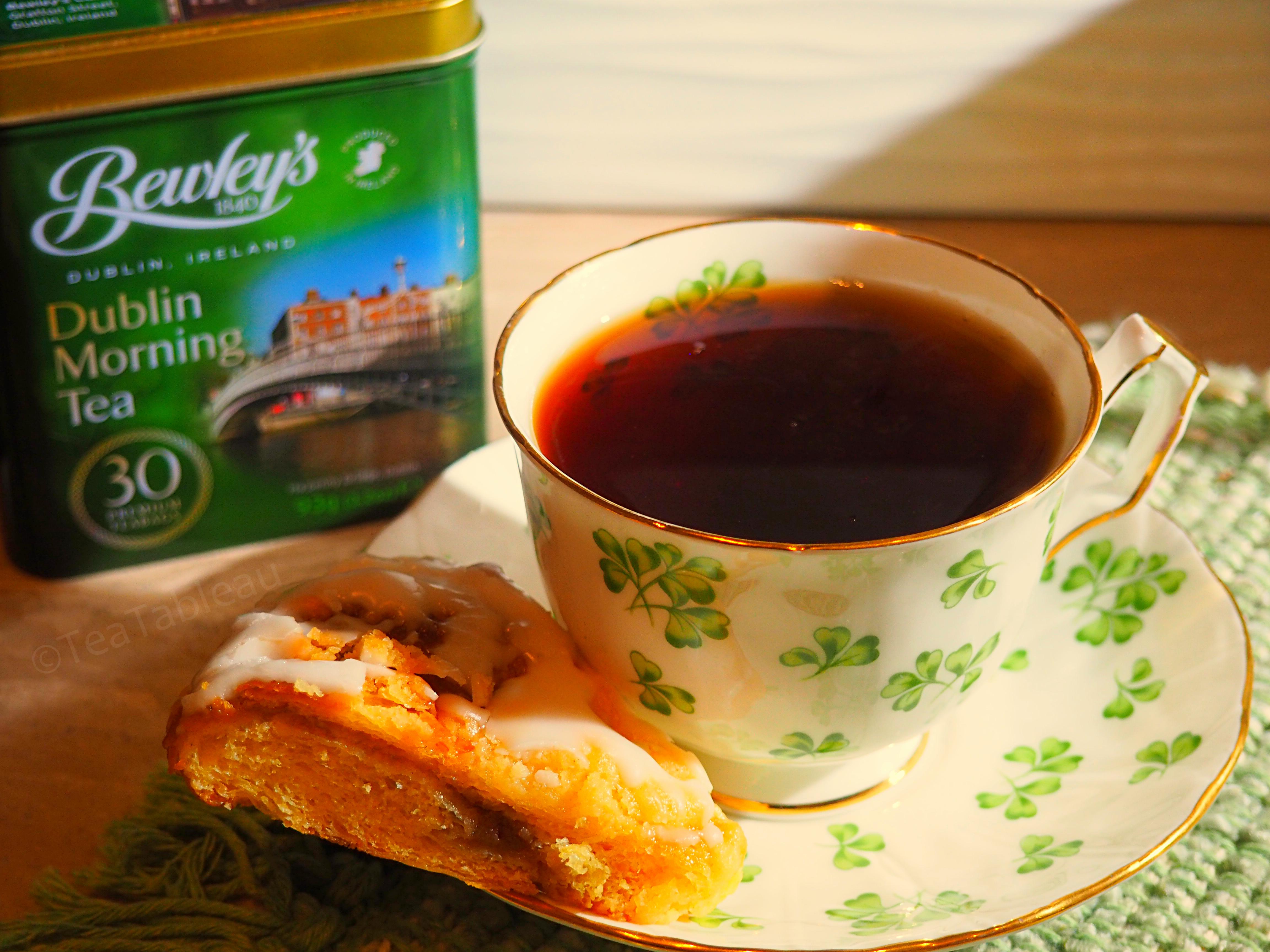 I am writing this post with gritted teeth and a fake smile upon my lips – retaining a professional demeanor in the face of such a dangerous fallacy can be almost impossible. But I promised you undiluted genealogy – and here comes test case number 1! Quick – go get a cup of tea before reading further!
I am writing this post with gritted teeth and a fake smile upon my lips – retaining a professional demeanor in the face of such a dangerous fallacy can be almost impossible. But I promised you undiluted genealogy – and here comes test case number 1! Quick – go get a cup of tea before reading further! I was recently told a scary story (just in time for Halloween) about the construction of a new county courthouse – the locals in charge of building said courthouse, decided to opt for a closet sized research table to access records, because “No one conducts onsite research anymore – it’s all available on Ancestry!”
I was recently told a scary story (just in time for Halloween) about the construction of a new county courthouse – the locals in charge of building said courthouse, decided to opt for a closet sized research table to access records, because “No one conducts onsite research anymore – it’s all available on Ancestry!”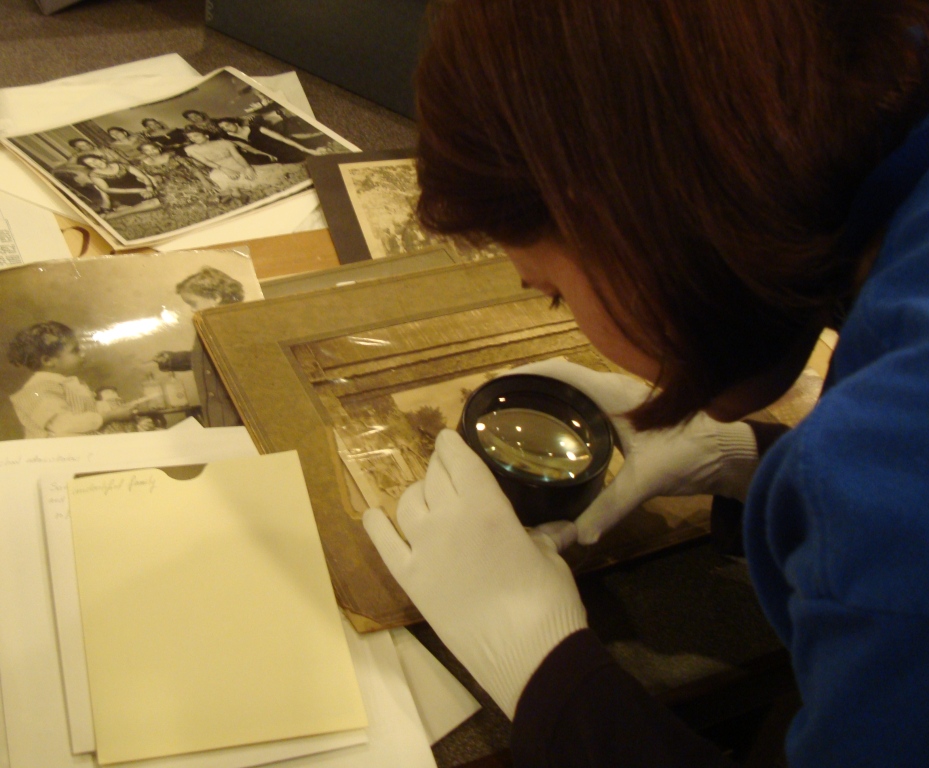
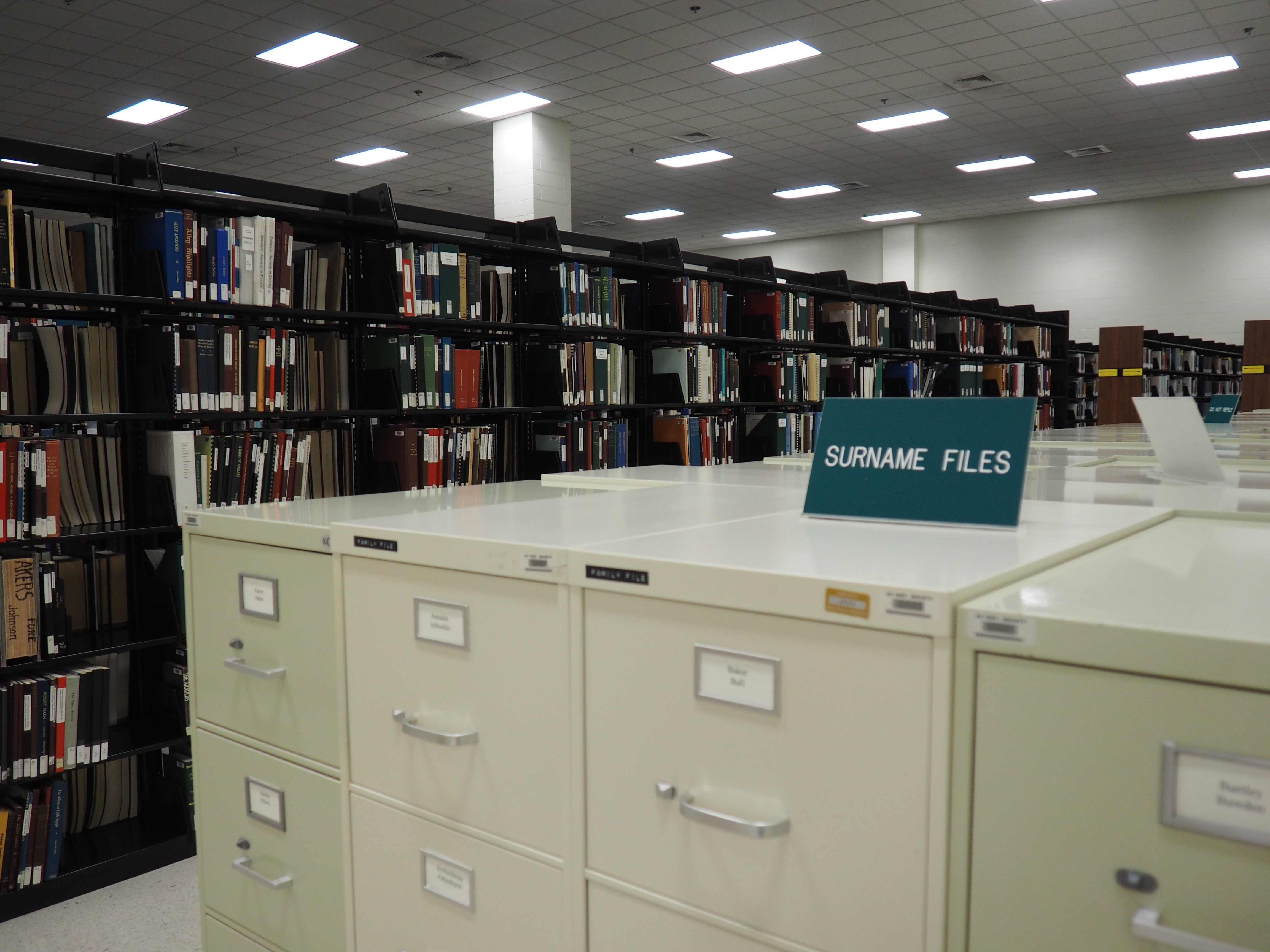
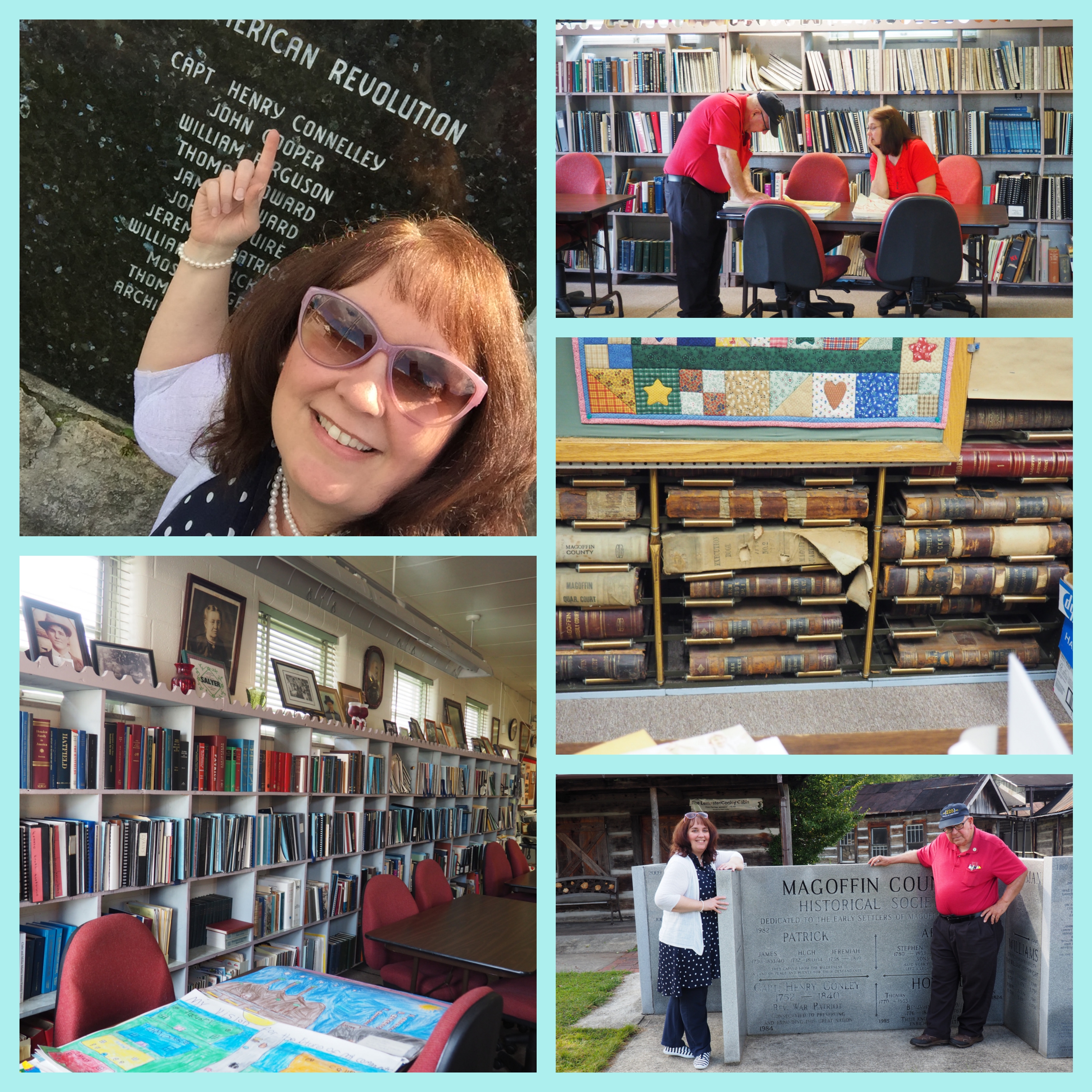 In short – always think of research as a multi-dimensional process. We are fortunate enough to have wonderful records at the tip of our fingers via super digitization efforts of many – but our research should NEVER stop there! Our storehouses of history contain the family records we need: Bible records, genealogy research files, correspondence, diaries, photos, school and Church records, etc. A fundamental principle of the
In short – always think of research as a multi-dimensional process. We are fortunate enough to have wonderful records at the tip of our fingers via super digitization efforts of many – but our research should NEVER stop there! Our storehouses of history contain the family records we need: Bible records, genealogy research files, correspondence, diaries, photos, school and Church records, etc. A fundamental principle of the